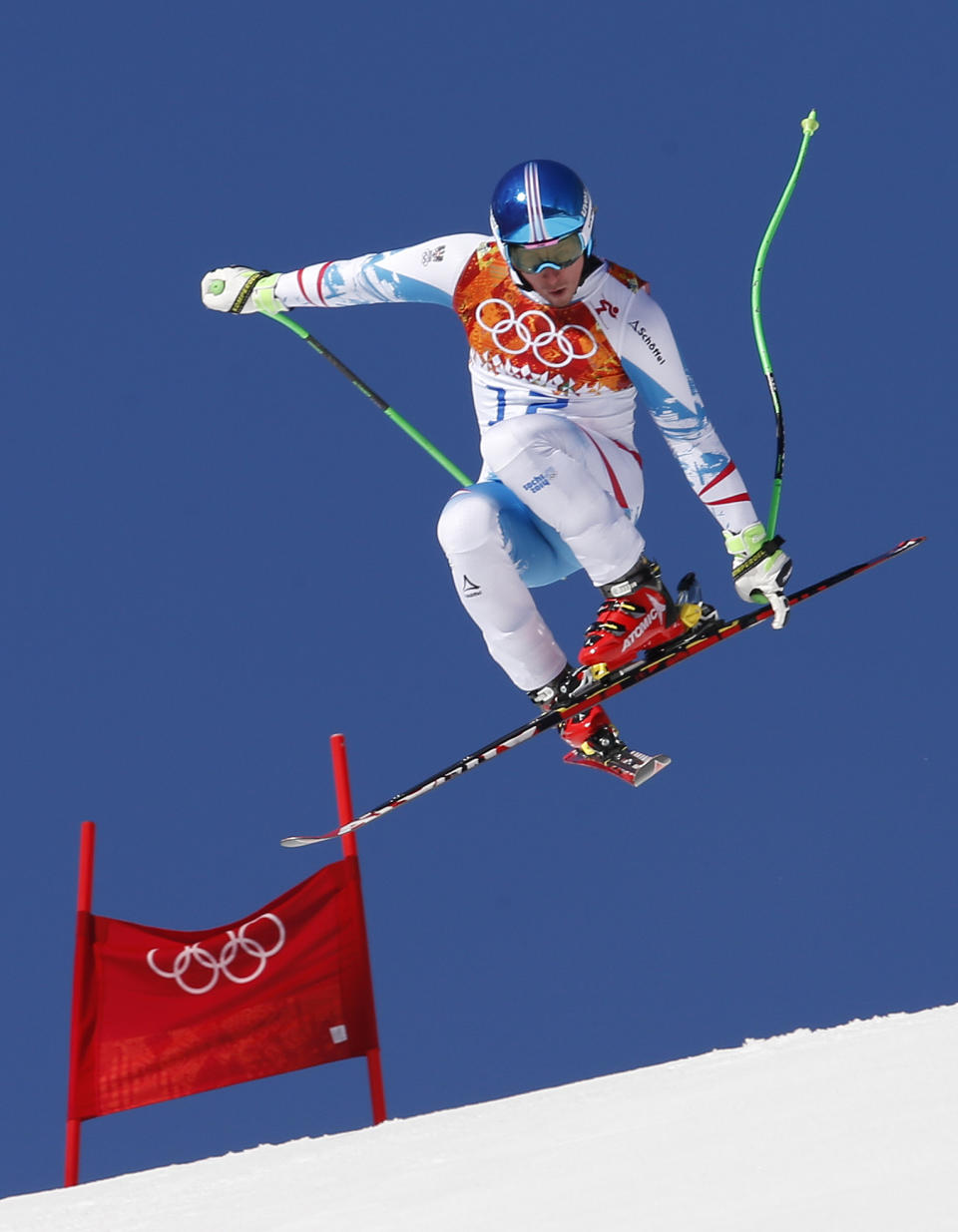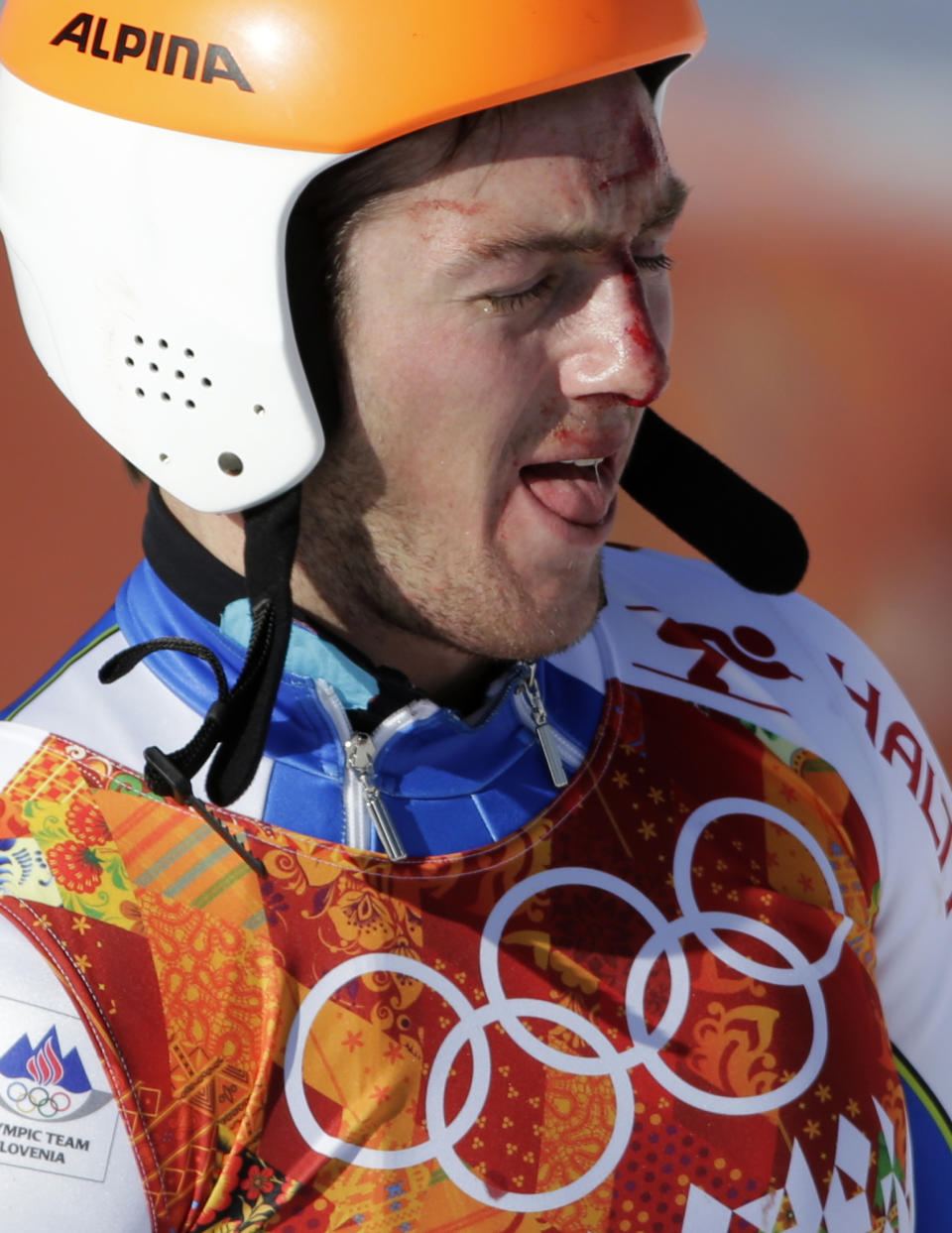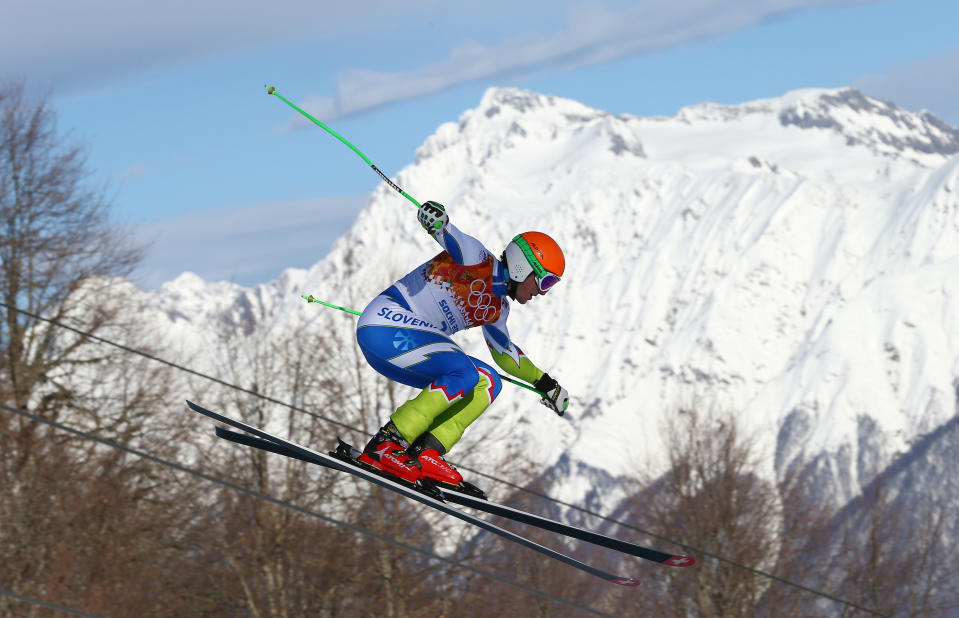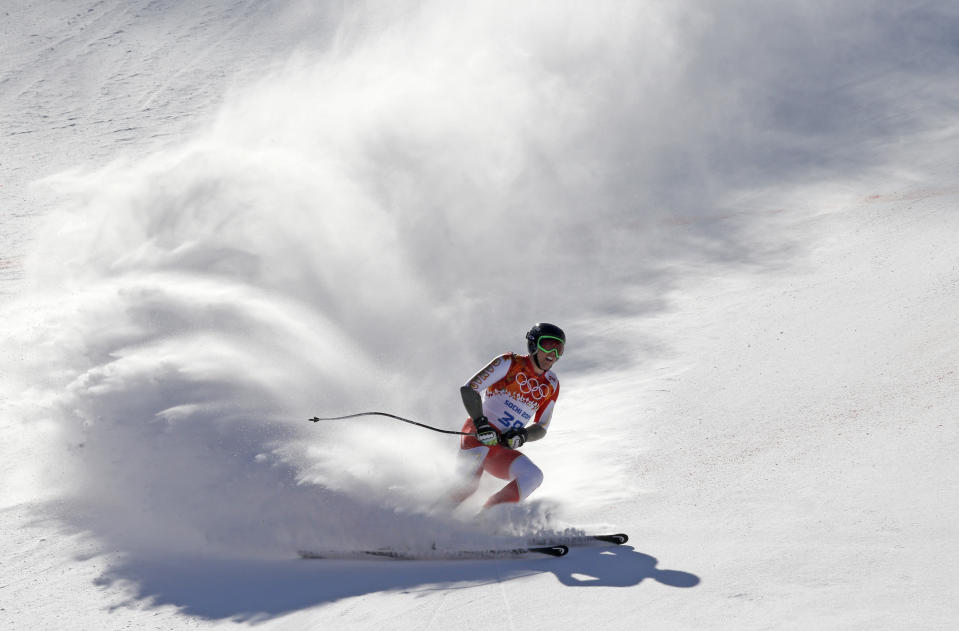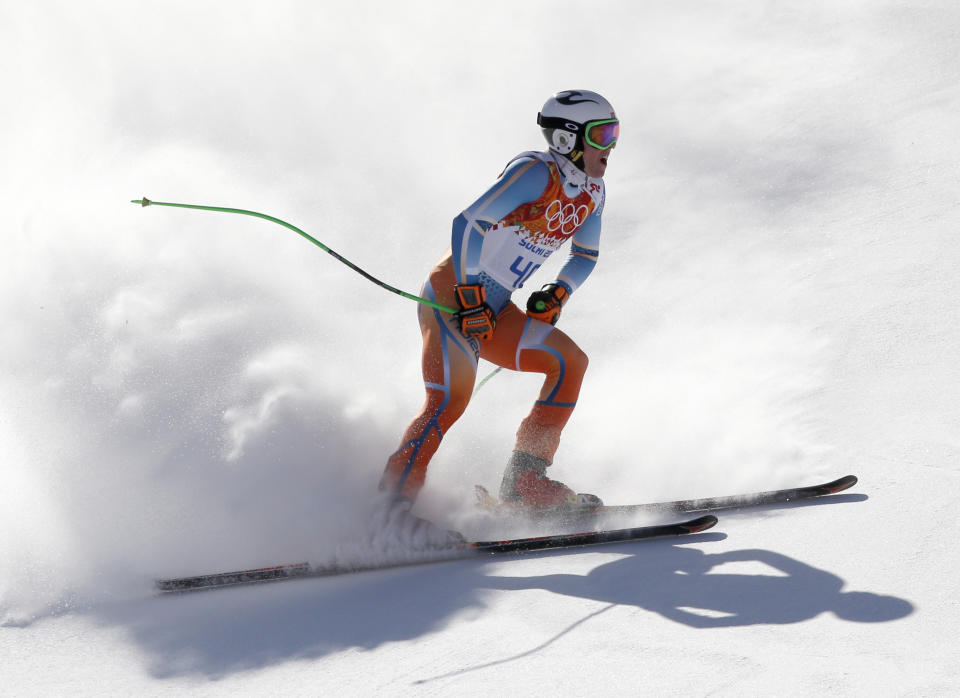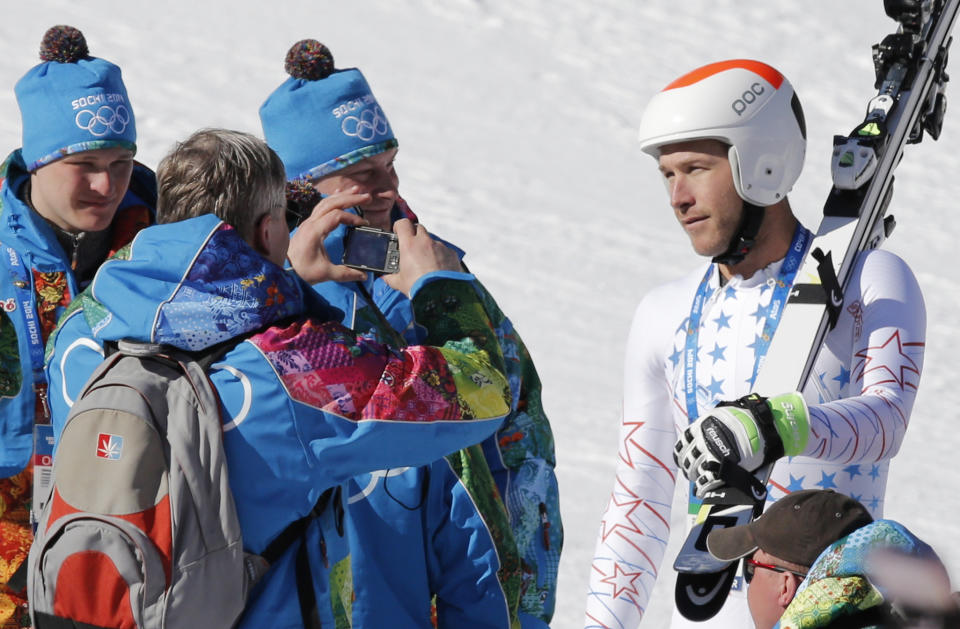Alpine skiing course is a treacherous downhill
KRASNAYA POLYANA, Russia (AP) — One skier bloodied his face. Another felt fortunate to avoid a nasty fall. All told, 10 of 55 starters failed to make it all the way down the slope.
And that was just the training runs.
The potential for crashes and serious injury will be high when the men's downhill at the Sochi Olympics opens the Alpine skiing medal events Sunday on a course that is as tough as they come.
"It's very treacherous," Bode Miller said after leading the final training Saturday. "This course has teeth everywhere. The top is aggressive. And the speeds are so high and swingy and bumpy, that you can hook an edge anywhere."
Rok Perko of Slovenia knows that now. The first starter Saturday, Perko took the wrong direction off a jump three-fourths of the way down and ended up with his face bloodied and possibly a broken nose.
American downhiller Marco Sullivan, the next starter, ran into trouble when he lost focus for an instant over the Bear's Brow jump a little farther down.
Sullivan's skis clicked together and he was heading for the safety netting until he managed a last-second recovery.
"Luckily I was able to stay with it. It wouldn't have been good," said Sullivan, who is from Squaw Valley, Calif. "It was definitely an adrenalin shot."
Miller watched Sullivan's incident as he was waiting to ski.
"He almost killed himself. I mean, if that crash doesn't go just the way it went, he goes flying through B-nets, going 75 (mph), straight into the trees," Miller said. "That angle that he was going at right there is the worst spill zone in the entire course. It's just one of those things. And if you're not totally focused and paying attention, this course can kill you."
At 3.5-kilometers (2.17 miles), the Rosa Khutor course is longer than all the World Cup downhills except for the classic piste in Wengen, Switzerland. But unlike Wengen, there are no long gliding sections where racers can recover for a moment and regain their breath.
"It's relentless," said Steven Nyman, another American. "It turns three-fourths of the way down and then you think, 'OK, I can relax.' And then it's just bumps on the flats and you think, 'Great, I'm just going to rattle.' And then you have to take off these jumps and be in a balanced position. If it's smooth it's much safer off those jumps but if you have those rattles you have to prepare for that."
The course features three big jumps, the first of which, the Russian Trampoline, has a landing area so icy and hard that it resembles an ice hockey rink.
If someone's knee buckles, it won't be pretty.
"I think (crashes) will be part of the game," Erik Guay of Canada said. "There are some wild factors on the way down. But the solid skiers looked solid."
Adding to the difficulty is that the snow-type changes as skiers navigate their way down. It's grippy up top in the course's most twisty and technical section, icy in the middle off the Russian Trampoline and then spring-like at the bottom, which also has two jumps.
"It's a dangerous course, no question about it," said Guay, who won the classic downhill in Val Gardena, Italy, in December. "Especially if you're not skiing confident and strong. It's going to separate the great skiers from the other skiers."
Two years ago during the Olympic test event here, three top skiers came away with serious knee injuries — Miller, downhill winner Beat Feuz, and Ivica Kostelic, who won the super-combined.
The interesting thing about the injuries to Miller and Feuz was that they were not apparent at first. It was only days later that the pain set in.
"The Russian Trampoline jump is very high, the impact is very big," said Kostelic, who won't race the downhill here but has trained on it for the super-combined. "I don't think that anyone is going to injure himself from just one jump. But day after day hitting the joints, it counts later."
With so much terrain to cover and so much to focus on in runs that last more than 2 minutes, fatigue and mental focus also will be factors.
"You either came in fit and ready to go or you're hurting right now and that probably plays on your mind," Guay said.
Nyman said his legs felt like they were "burning" when he got to the finish.
"You're just huffing and puffing," the skier from Sundance, Utah, said. "Yesterday I was laughing at how hard I was breathing, but I couldn't laugh because I was breathing too hard."
It all should make for quite a show.
"That's our sport. That's half of the spectacularity about it," said Kjetil Jansrud of Norway. "We have crashes, we have a lot of stuff happening and that's the way downhill is. It's supposed to be one of the toughest disciplines on snow."
___
Follow Andrew Dampf at http://twitter.com/asdampf
